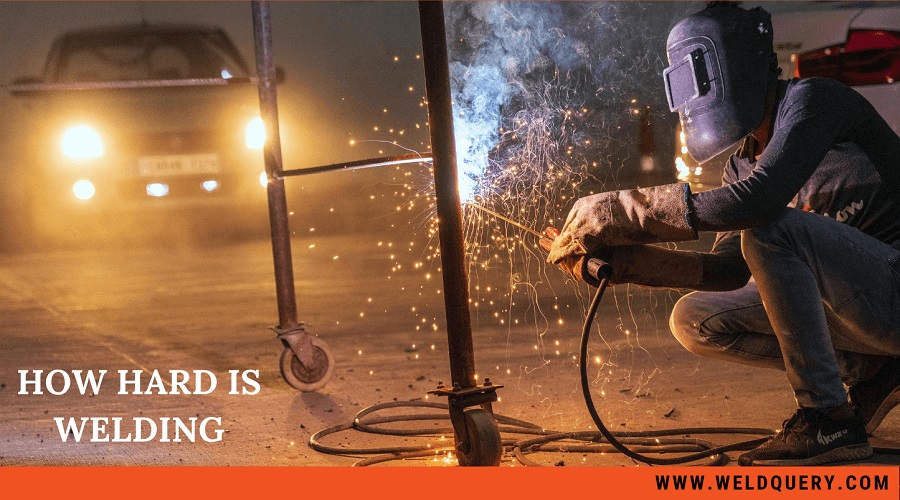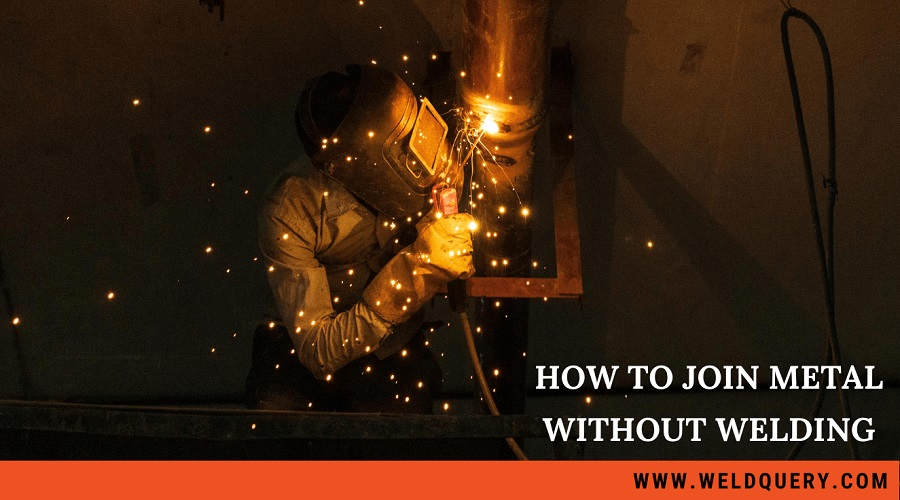Modern civilization has been constructed on the base of metal, and in the world of metal, welding plays a significant role. Welding is a process that joins materials.
Related: How to Join Metal Without Welding
For this reason, construction from an airplane to a car or a bridge to a multi-storied building needs to go through a welding process.
And tack welding, an impermanent means to bind the components before final welding, is an inseparable step of welding, crucial for the success of the whole welding process.
Contents
What Is Tack Welding?
Tack welding is a welding that is executed to hold the metals that are going to be welded to maintain their particular position, spacing, and length before the final welding occurs.
It is as like as final welding, just small and done initially as replacement of a sheet metal screw or clamp to place materials in the desired position to ensure the success of the final welding of the construction.
What Purposes Tack Welding Serves?
Tack welding serves the purpose of holding metals or components in proper alignment before actual welding begins.
By doing this, it handles and contrasts movement and distortion of the components during welding and maintains the joint gap of the components of the structure as well.
Tack welding ensures the metals’ strength during the whole welding process and works to resist stresses when the final welding is performed with the components that are still clamped in a fixture.
Why is Tack Welding so Important?
There are many benefits of tack welding though it may seem insignificant to a few people as it is a temporary process.
But tack welding is one of the essential things of the welding process because, without tack welding, the further procedure of welding is not possible.
Without tack welding, the fit-up of the components is not possible, so the final welding. Tack welds hold the component in the right place, secure their alignment and mutual location, and ensure their dimensional stability for actual welding.
Especially when you are working on small projects and need your components to be positioned correctly for a short period, tack welding is the best option.
Tack welding holds components without using fixtures and keeps the joint intact and unbroken. Besides, it increases the mechanical strength of the parts of the structure against its weight.
During the welding procedure, when the metals needed to be moved, elevated, or manipulated, tack welds ensured the metals’ durability.
Another advantage of tack welding is if you find there is a problem in the structure before actual welding, reposition of the components is possible. You can disassemble the parts of the structure and align them easily and tack welding again.
How to Perform Tack Welding Successfully?
A tack weld is small welding compared to final welding, but performing it is the same as performing final welding.
Tack welding uses the strategy of using oxygen and high-temperature flame-like oxyacetylene that gets burned in it for welding. The metals get melted and get affixed together.
To be more specific about tack welding, you have to prepare all your materials at first.
Then you have to set them in the required position, and if they fit accurately, you have to tack it.
Then place the head of you about 1/2″ away from joint or materials for tack welding, and press the trigger for around 2 seconds.
The components will be tack welded. The thicker your base material is the big tack will be needed.
Defective Tack Welding Risks:
From the discussion so far, we came to know how to perform tack welding and how important it is. But if it is not performed correctly, this defective tack welding generates various kinds of risks.
Improper tack welding, no matter the reason behind it, causes weld defects like cracks, craters, arc strikes, hard spots, and leftover slag in the assembly that can be dangerous for people and property.
If there are defective tack welds, then the temporary joint of components can be ruined before or during final welding. Parts of the assembly or whole assembly can fall apart, which can harm people’s life or property.
Moreover, limited heat input causes fast cooling, which is usually used in short tack weld. Unfortunately, not every steels and vessel used to form the structure can handle this fast cooling and causes the crack-sensitive, fragile area to be created in the heat-affected zone of the components.
This results in little cracks in the base metal. But no matter how small the cracks are, they can whole structure falls, which can be detrimental to the people and property.
What to Avoid When Tack Welding?
You need to know what to avoid when performing tack welding to avoid inappropriate welding. First of all, we must check the temperature of the welding area before tack welding.
Do not tack welding when the temperature at a welding area is lower than –5°C.
Avoid non-low hydrogen electrodes for tack welding as thick components of mild steel, high tensile strength steel, and heat-resistant low-alloy steel tends to cold cracking of tack welds. Instead, use low hydrogen electrodes for a good result.
Don’t tack welding on sharp corners of the parts of the structure because residual stress gathers there. Try to tack welding at the middle point of the surface of the components.
Lastly, don’t forget to check the tack welding is done correctly or not after it is performed. After tack welding, joints and components should be appropriately examined by the welders to identify any defect. If there is a defect, the tack welding process can be redone.
Distortion Control Procedure:
Having a good grasp of the distortion control procedure is essential for any welder to perform a successful tack welding process. There are some techniques by following which distortion control procedure can be done.
The only duty of tack welds is not to maintain a joint gap or ensure the correct position or alignment of the metals; they should be resistant to transverse shrinkage to guarantee sufficient weld penetrations.
Otherwise, distortion will happen. If tack welds are placed consistently from one end to the other end of the components, shrinkage can enclose the space at the opposite end. In such a case, one sheet end often overlaps the other sheet that can distort the welding.
For controlling distortion, tack welds should be placed at the joint ends of the components and then affixed in the middle of each resulting distance until the complete component’s length is covered with the necessary number of tack welds at the required space.
Besides, you have to control the fit-up of the assembly or structure, do not over the weld and use intermittent welds for distortion control procedures during tack welding.
Frequently Asked Questions:
Q: Why should pieces be tack welded before they are welded?
Answer: The pieces need to be joined together until the final welds are made for a successful welding process, and tack welding holds the parts of construction in required alignment temporarily.
Q: How do you successfully tack weld?
Answer: The procedure of tack welding demands placing small tack welds on one side of the joint with the filler rod, and welding the other side of the joint after the previous weld gets cool. All tack welds need to have a consistent slope that blends the weld’s sides into the metal.
Q: Can you tack weld stainless steel?
Answer: Yes, you can tack weld stainless steel. For tack welding .063″ stainless steel, the machine should be set to around 65-95 amps.
Q: What is the difference between spot welding and tack welding?
Answer: Spot welding gets performed for joining pieces together permanently when tack welding holds the pieces together temporarily until final welding.
Spot welding is performed on thinner and smaller metals with a thickness of a ¼ in or less, but tack welding is performed on different types of base metals.
Tack welding is convenient for reposition purposes, but repositioning components after spot welds is difficult as it’s permanent welding and more durable than tack welds.
Q: What determines the length of a tack weld?
Answer: The thickness of the panel determines the length of a tack weld or distance between each tack welds.
Final Words:
In the construction world, no prolific creation with metals is possible without knowing about tack welding properly. Successful tack welding is a must for a successful welding process, and negligence in tack welding can cause the failure of the whole project.
So, welders should try to complete tack welding correctly and try to avoid the risks which get caused by poor tack welding.
SUGGESTED POST:
How to Become a Pipeline Welder
Save Phace Welding Helmet Review
Best Welding Shirts in 2020 [With Buying Guide]


